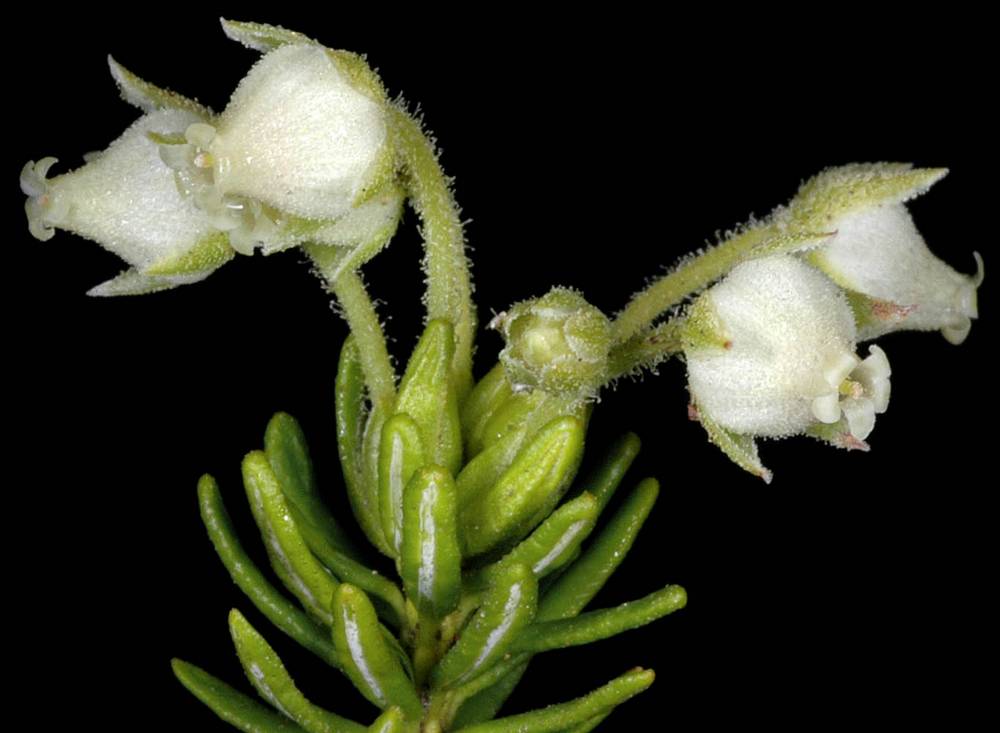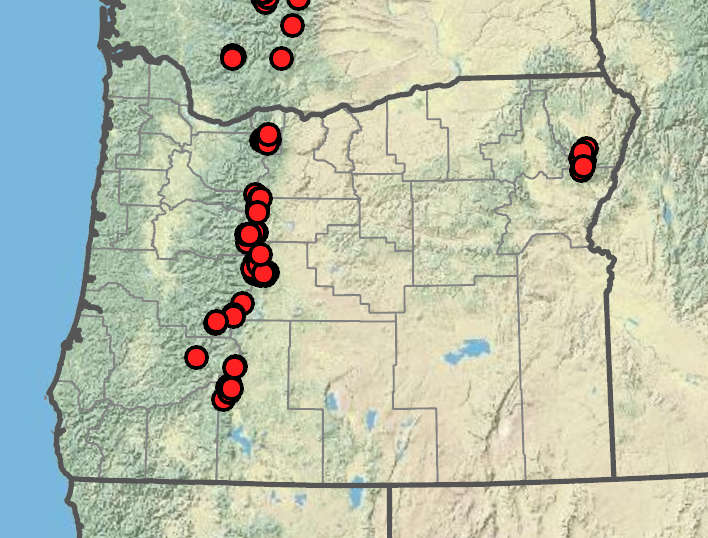Phyllodoce glanduliflora
Ericaceae
yellow mountain heather
heath family
younger branches glandular-pubescent; older branches glabrous.
erect to decumbent or prostrate, glabrous or hairy.
overlapping, generally curving upward, becoming straight with maturity, 4–12 × 1–2 mm;
margins revolute, glandular-serrulate;
surfaces abaxially grooved and glandular, adaxially glabrous to glandular.
normal, reduced, or absent;
basal rosettes or cauline, usually alternate but sometimes opposite or whorled; simple; leathery or not;
margins entire or toothed; plane or revolute;
petioles present or absent;
stipules absent.
1–9-flowered;
pedicels ? 3 cm, glandular.
terminal or axillary racemes; panicles;
cymes or flowers solitary, generally bracted.
sepals narrowly ovate to lanceolate, 2.5–4 mm, lobed nearly to base, glandular-pubescent abaxially;
margins not ciliate;
corollas narrowly urceolate;
petals 5–8 mm, white to yellow to yellowish green, glandular;
lobes reflexed, 1–2 mm;
stamens included;
filaments 2–3 mm, pubescent;
anthers 1–1.5 mm;
styles included, 3–5 mm.
bisexual, radially or bilaterally symmetric;
sepals 3–5; distinct or fused basally;
petals 3–5; distinct or fused;
stamens 5–10;
anthers awned or not, dehiscent by pores or slits;
styles 1;
stigmas 1, generally 5-lobed.
globose; ~3 mm in diameter, glandular.
capsules; berries, or drupes.
winged or not.
=24.
Phyllodoce glanduliflora
Ericaceae
Cliffs and subalpine to alpine slopes. Flowering Jul–Aug. 300–3000 m. BW, Casc. WA; north to AK, east to WY. Native.
See comments for Phyllodoce empetriformis.
Nearly worldwide. ~120 genera; 26 genera treated in Flora.
Some authorities treat the subfamilies of Ericaceae as distinct families. Within Oregon, these would include Monotropaceae, Pyrolaceae, and Vacciniaceae. Conservatively, we have chosen not to recognize these families. Non-photosynthetic ericaceous species are often referred to as saprophytes, plants that use decaying or non-living organic matter for nourishment. In reality, these species are true parasites, obtaining all of their nutrition from mycorrhizal fungi, which in turn parasitize photosynthetic plants, usually conifers. They are more appropriately referred to as epiparasites or mycotrophs.
Stephen Meyers
- Local floras:
CA,
OR
- Local Web sites:
CalFlora,
CalPhotos,
Flora NW,
PNW Herbaria
WildflowerSearch
iNaturalist (observations)
- LBJ Wildflower Center
- SEINet
- Plants of the World Online
- Encyclopedia of Life
- Wikipedia
- Google Image Search



